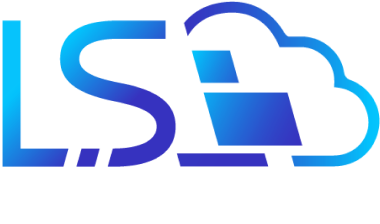
In our previous session, we were talking about the most useful ways of deciding which components ignite the spark on your audience. Let’s continue our story by learning how to choose the most appropriate tools/widgets to integrate into your main model (product). So, let’s see how we can build a ‘wow’ product.
As we gather new thoughts and concepts, we assess them through lean prioritization. This is a realistic, easy-to-create 2×2 matrix with two axes – complexity and value:
Value – what influence does a particular component adds to the product.
Complexity – what are the skills and efforts needed to add the component
We begin by developing Quick Wins, – the components that add a lot of value and offer quick integration.
Next – Big Bets. These are quality components that come with great value, but they are resource-intensive to implement.
Then – the tasks and functions that do not bring much value, but can be easily implemented. They can be fully realized later.
And, finally, Time Sinks – these components fall back in the priority roster and requires little to no attention.
For every product, the Value is specific, clear and realizable. For our purpose, the Value has components that:
1) Bolster the conversion analytics of trial-to-paid (metrics movers)
2) Act as bait for new prospects
These are components that are attractive to new users during the onboarding process. It is good to remember that most users drop off on the eve of the 2nd onboarding day. For instance, 15% is a decent indicator for 1st-day retention for SaaS businesses. 85% of users quit on the 2nd day. You need to think of add-ons and components that would improve new users’ retention rates.
3) Help retain existing users
Customers who subscribed for a product are asked to provide feedback on components and features that would make the product even better. We do not “rush” blindly to set about the development process without considering vital stats from the users. We gather relevant statistics for each component including the number of times the users have requested a particular feature/component. After that, we develop the most requested components.
4) Unique and proffers additional value to the final product
With over 500 project management systems, survival means more than just producing run-of-the-mill products. It’s vital to produce new and unique products that reflect the needs of the users.
These are components that give us the competitive advantage that pushes us a notch higher than our competitors. An implication that the final product should be irreproducible, unique, and cannot be repeated.
Planning Criteria – simple but tricky like poker

To evaluate ideas, we use Planning Poker:
Going to a group
The host takes the idea, and the group discusses it aloud to arrive at a common denominator and understanding
Each player measures the idea on the Fibonacci scale and puts the card face down
The moderator turns up and reveals all cards
Players placing maximum and minimum points must clarify their decision
The team builds on an agreeable decision
Finally, we arrive at a common denominator and then proceed to the next idea
Prioritization techniques
Daniel Zacarias assembled 20 ranking techniques into the collection and grouped them according to two properties: external/internal and quantitative/qualitative techniques.

The Kano model is a great example of an external quantitative technique where we give a feedback form to the users. An example of the internal quantitative technique is Lean Prioritization where the value is compared against the cost.
Developing Features’ Scorecards
As scoring is an irksome process, we do not score all the components. We only draw scorecards for those that have won in Lean Prioritization.
We measure each component based on a scale of 0 to 10. The process is followed by multiplication of the measured values by their weights to arrive at a final numerical score, which allows us to draw a meaningful feature-to-feature comparison.
Here are some of the parameters to include in the scorecard:
Target metrics
Increases profit
Helps attract new customers
Helps retain existing customers
Value for users
Strategic value – now it isn’t useful, but with time it can help to do something
Whether it is possible to solve a problem through the existing functions
Strong innovation
Many competitors have it as well
Many users need it
How often is it needed?
Time and cost for development
Time and cost of implementation
Confidence for its popularity
Expected by Kano
Desired by Kano
Exciting for Kano – wow-effect, value for PR
Improves the code (facilitates redevelopment and support)
Pirate Metrics (AARRR)
Results
So, where does this process culminates?
Decreased the degree of intuition influence on the decision-making process – now we are guided not by the instinct of the product manager, but by clear and tangible evaluation criteria.
“Put in place” HiPPO (highest paid person’s opinion). Hippo is the opinion of the person with the highest salary. As a rule, this is the boss who can use his authority for making decisions.
We systematically grow strategic indicators: we begin moving in the right direction, which leads us to our bright goal. We deliver more value per unit of time to our customers. Maximizing Value is our goal. We want our customers to receive the most important and useful features. The team understands WHY we are doing specific features. Thanks to scoring and criteria, it’s easy to explain to all curious colleagues why we took this or that feature to work out.
Minor ideas are hidden and are under the radar – yet 80% of ideas will never be realized. As we reduce the time costs for grooming the backlog – now the manager simply does not see the minor features – they are hidden from him.
And how do you choose features for development?







Leave a Comments